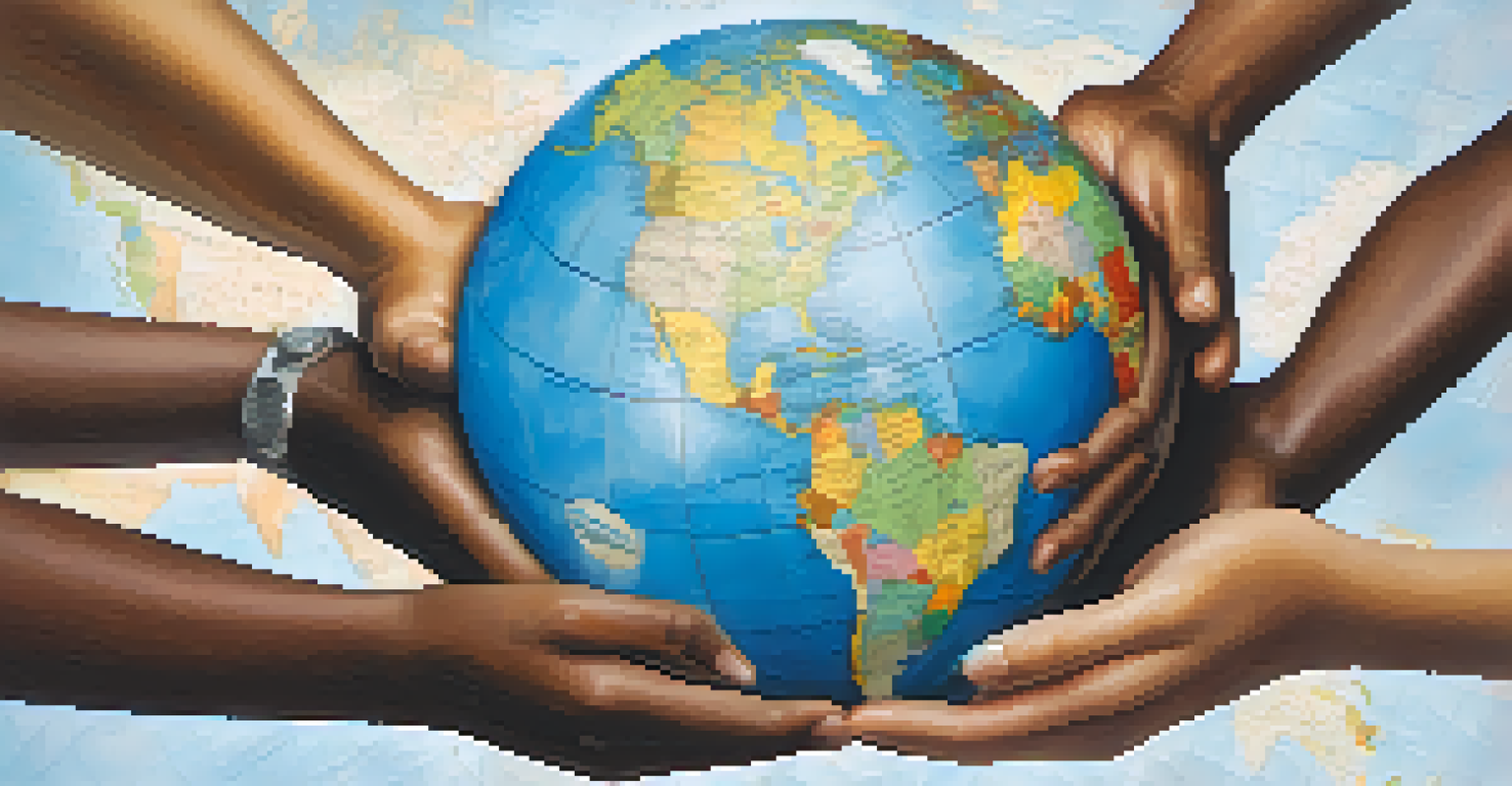Navigating Cultural Differences in a Global Career Landscape

Understanding the Importance of Cultural Awareness
Cultural awareness is crucial in today’s global job market. It helps you understand and respect different viewpoints, which can lead to better collaboration with colleagues from diverse backgrounds. When you acknowledge cultural differences, you foster a more inclusive work environment that enhances teamwork.
Diversity is not a reason for division; it is a source of strength.
For instance, consider how communication styles vary across cultures. In some places, direct feedback is valued, while in others, a more subtle approach is preferred. Recognizing these nuances can prevent misunderstandings and improve workplace relationships.
Ultimately, being culturally aware not only enriches your professional interactions but also broadens your perspective, making you a more effective team player in a global context.
Recognizing Cultural Norms and Values
Every culture has its own set of norms and values that shape behaviors and expectations. Understanding these can give you insights into how to interact with colleagues effectively. For example, in some cultures, punctuality is seen as a sign of respect, while in others, a more relaxed approach to time may be the norm.

By familiarizing yourself with these cultural nuances, you can adapt your approach, whether it’s in meetings, emails, or casual conversations. This not only helps in avoiding faux pas but also demonstrates your respect for their culture.
Embrace Cultural Awareness
Understanding and respecting cultural differences fosters better collaboration and inclusivity in the workplace.
In the long run, embracing these differences can lead to more meaningful connections and a stronger sense of camaraderie within diverse teams.
Adapting Communication Styles for Global Engagement
Effective communication is key in any career but becomes even more critical in a global context. Different cultures have varying communication styles, which can impact how messages are received and interpreted. Learning to adjust your communication style can significantly enhance clarity and reduce potential conflicts.
In a multicultural workforce, the ability to adapt and learn from one another is essential for success.
For example, in some cultures, indirect communication is preferred, while in others, a straightforward approach is expected. By adapting your style, you can create a more comfortable environment for everyone involved, making it easier to share ideas and collaborate.
Moreover, being mindful of language barriers and using simple, clear language can further bridge communication gaps, ensuring that everyone feels included and understood.
Building Relationships Across Cultures
Building strong relationships is essential in any career, and this is especially true in a multicultural environment. Taking the time to understand your colleagues' backgrounds and interests can foster trust and collaboration. Simple gestures, like asking about their culture or sharing your own, can go a long way in establishing rapport.
Participating in cultural events or team-building activities can also help break down barriers and create a sense of belonging. This not only enhances your professional network but also enriches your personal experience as you learn from diverse perspectives.
Adapt Communication Styles
Adjusting your communication approach based on cultural contexts enhances clarity and reduces misunderstandings.
Ultimately, strong relationships lead to better teamwork and can significantly improve overall job satisfaction, making your global career more rewarding.
Overcoming Stereotypes and Biases
Stereotypes and biases can hinder effective collaboration in a diverse workplace. It’s important to recognize and challenge these preconceived notions to create a more harmonious work environment. By actively questioning your assumptions, you can promote a culture of inclusivity and respect.
For instance, avoid making generalizations about a culture based on limited experiences. Instead, engage with individuals on a personal level to appreciate their unique stories and contributions. This approach helps dismantle stereotypes and fosters mutual understanding.
In doing so, you not only enhance your own cultural competence but also encourage others to embrace diversity, leading to a more innovative and dynamic workplace.
Leveraging Cultural Differences for Innovation
Cultural diversity can be a powerful driver of innovation. When teams consist of individuals from various backgrounds, they bring unique perspectives and ideas to the table. This diversity of thought can lead to creative problem-solving and innovative solutions that might not have emerged in a more homogenous group.
For example, brainstorming sessions that include diverse voices often yield more comprehensive strategies, as each member contributes different viewpoints. Embracing these differences can enhance your team's ability to tackle challenges and seize opportunities.
Build Relationships for Success
Developing strong relationships across cultures leads to improved teamwork and job satisfaction in diverse environments.
Therefore, rather than viewing cultural differences as obstacles, consider them assets that can propel your organization forward.
Continuously Learning and Adapting
Navigating cultural differences is not a one-time effort; it requires continuous learning and adaptation. Staying open to new experiences and seeking feedback can help you grow in your understanding of cultural dynamics. This proactive approach allows you to refine your skills and enhance your global career.
Consider attending workshops, reading books, or participating in online courses focused on cultural competency. These resources can provide valuable insights and tools for working effectively in diverse environments.

Moreover, engaging in conversations with colleagues from different backgrounds can enrich your understanding and foster a culture of ongoing learning within your team.
Creating an Inclusive Work Environment
Ultimately, fostering an inclusive work environment is essential for thriving in a global career landscape. This means not only recognizing and celebrating cultural differences but also actively promoting practices that support diversity. Encouraging open dialogue and providing platforms for all voices to be heard can create a sense of belonging for everyone.
Implementing policies that value inclusivity and diversity can also lead to a more engaged and motivated workforce. When employees feel valued and understood, they are more likely to contribute their best work.
By prioritizing inclusivity, you not only enhance your workplace culture but also position your organization for success in a competitive global market.